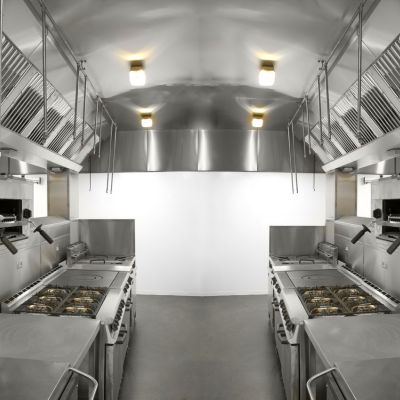Step into the domain of Open Pricing, a groundbreaking concept reshaping traditional revenue management strategies. This dynamic approach thrives on adaptability, responding seamlessly to the ever-evolving market landscape.
In this discussion, we’ll uncover the transformative impact of Open Pricing, offering insights into its capacity to redefine how businesses navigate the complexities of revenue management.
Join us as we explore the evolution and potential of Open Pricing in the continually shifting terrain of the hospitality industry.
Understanding Open Pricing

Open pricing is a contemporary approach to revenue management that redefines how hotels set their room rates.
Unlike conventional fixed pricing models, Open Pricing embraces flexibility, allowing establishments to dynamically adjust rates in response to real-time demand, market conditions, and various other factors.
Critical Components of Open Pricing
Dynamic Pricing: At the core of Open Pricing is the concept of dynamic pricing. This involves setting rates based on many variables, such as demand patterns, competitor pricing, seasonal trends, and local events. The dynamic nature ensures that room rates are optimized for each unique circumstance.
Real-time Revenue Adjustments: Open Pricing enables hotels to make instantaneous adjustments to room rates. This responsiveness ensures that pricing aligns with the ebb and flow of demand, maximizing revenue potential during peak periods and offering attractive rates during slower times.
Flexible Pricing Models: Traditional fixed pricing models often rely on set rates for specific room types. Open Pricing, on the other hand, introduces flexibility by allowing different rates for the same room type based on various factors. This adaptability ensures a more nuanced and strategic approach to hotel revenue management.
Departure from Fixed Pricing
Open Pricing marks a departure from the rigidity of fixed pricing models that set rates in a predetermined manner.
Instead, it introduces a fluidity that acknowledges the dynamic nature of the hospitality industry. This departure empowers hotels to respond swiftly to market changes, optimize revenue streams, and stay competitive in a fast-paced environment.
How Open Pricing Works

Let’s peek behind the scenes of Open Pricing and see how it operates in the real world. Instead of fixed numbers, Open Pricing is a responsive strategy, continuously adjusting room rates based on various factors to optimize pricing for hotel rooms in real time.
Let’s break down the basics.
Reading the Room – Market Demand Analysis
Imagine having a sixth sense that tells you when everyone wants to book a room. That’s what market demand analysis does for Open Pricing.
It looks at booking patterns, figures out busy times, and understands what guests seek. By keeping an eye on this, hotels can tweak their prices to match what guests are willing to pay.
Keeping an Eye on the Neighbors – Competitor Pricing Influence
Hotels don’t exist in isolation, and Open Pricing knows that. It keeps tabs on what other hotels are charging.
If the hotel down the street drops its prices, Open Pricing might suggest doing the same to stay in the game. It’s like a friendly competition where everyone adjusts their moves to stay in the lead.
Rolling with the Punches – Dynamic Pricing Variables
Life is full of surprises, and so is Open Pricing. It considers all sorts of unexpected things—like a significant local event or even a sudden change in weather.
These factors can affect how much people are willing to pay for a room. Open Pricing takes it all in stride, making sure hotel prices make sense no matter what’s happening.
Open Pricing Vs. BAR Pricing
Decoding the Differences
Open Pricing and Best Available Rate (BAR) pricing are two distinct approaches in hotel revenue management. Let’s dive into the differences between these models and understand why Open Pricing has gained prominence.
1. Open Pricing Overview
Open Pricing functions like a dynamic guide, adjusting room rates in real-time based on various factors. It stands in stark contrast to Best Available Rate (BAR) pricing, which follows a more static approach.
2. Dynamic Market Responsiveness
Open Pricing excels in its responsiveness to market changes. It considers real-time factors such as demand fluctuations, competitor pricing strategies, and local events. This adaptability ensures that room rates align with current market conditions.
On the other hand, BAR pricing tends to remain fixed, needing more agility to adjust promptly to dynamic market shifts.
3. Adaptive Rate Models
A key advantage of Open Pricing lies in its adaptive rate models. This means that room rates are not set in stone but are fluid, allowing for adjustments based on demand spikes, seasonal variations, or sudden market trends. This adaptability contributes to revenue optimization.
In contrast, BAR pricing relies on predetermined rates that might not reflect the nuanced demands of the market.
4. Market-Driven Pricing
Open Pricing is inherently market-driven. It considers the broader landscape, analyzing competitor pricing strategies and market demand. By doing so, it ensures that a hotel’s pricing strategy remains competitive and attractive to potential guests.
BAR pricing, being static, may miss out on these insights, potentially leading to missed revenue opportunities.
5. Potential Challenges of BAR Pricing
While BAR pricing has its merits, its rigidity can pose challenges. In an ever-changing industry, static pricing may result in missed revenue potential. The inability to swiftly adapt to market dynamics could impact a hotel’s competitiveness and overall financial performance.
The Concept of an Open Pricing Strategy

In hotels, Open Pricing Strategy is like a flexible tool that adjusts room rates based on different factors in real time.
Unlike traditional approaches, an Open Pricing Strategy takes a holistic stance, considering various factors to set rates that resonate with guests and the ever-changing market dynamics.
Unpacking Open Pricing Strategy
At its core, an Open Pricing Strategy is more than assigning a fixed value to a hotel room. It’s a comprehensive approach that intertwines strategic considerations, harnesses the power of data analytics, and engages in nuanced decision-making processes.
Holistic Rate Setting
Gone are the days of rigid pricing structures. An Open Pricing Strategy looks at the bigger picture, considering many elements that influence how rates are defined.
It considers not only the internal factors related to a specific hotel but also external dynamics that shape the broader market.
Strategic Rate Considerations
Strategizing room rates is no longer a one-size-fits-all endeavor. With an Open Pricing Strategy, hotels can tailor their rates strategically. This means factoring in aspects such as demand fluctuations, competitor pricing, and even local events that impact the desirability of a location.
Analytics in Pricing
Open Pricing leverages the wealth of data available in the digital age. It dissects patterns, identifies trends, and, most importantly, understands guest behavior.
This analytical prowess empowers hotels to make informed decisions, ensuring that room rates are not arbitrary but driven by insights.
Data-Driven Decision Making
In the domain of Open Pricing, decisions are not made in isolation. Every rate adjustment is a product of meticulous data analysis. Hotels can assess the demand ebb and flow, gauge the effectiveness of past pricing strategies, and adapt in real time to the ever-evolving market.
Advantages of Open Pricing
Let’s explore the advantages of embracing Open Pricing—a dynamic approach beyond traditional models, offering hotels a range of benefits that shape their competitive edge and revenue potential.
1. Maximizing Revenue Potential
Open Pricing opens the door to increased revenue potential for hotels. Unlike fixed pricing models, it allows for flexible adjustments based on real-time market demand.
This dynamic pricing strategy ensures that room rates align with what guests are willing to pay during peak periods, maximizing revenue opportunities.
2. Gaining a Competitive Edge
In the competitive landscape of the hospitality industry, Open Pricing provides a distinct advantage. It enables hotels to stay agile and responsive to market changes, outshining competitors with strategic rate adjustments.
This adaptability ensures that a property remains attractive to potential guests, fostering competitiveness in the market.
3. Capturing Market Opportunities
One of the standout features of Open Pricing is its ability to capture market opportunities. By constantly evaluating demand patterns and competitor pricing strategies, hotels can identify and seize opportunities to attract guests.
This proactive approach ensures that a property remains relevant and appealing in a dynamic market environment.
4. Adapting to Changing Dynamics
The flexibility inherent in Open Pricing allows hotels to adapt swiftly to changing market dynamics. Whether facing seasonal shifts, unexpected events, or evolving consumer behaviors, this pricing strategy empowers hotels to navigate challenges effectively and make timely adjustments to stay ahead.
5. Revenue Optimization through Data
At the heart of Open Pricing is a reliance on data-driven decision-making. This not only enhances revenue optimization but also provides a deeper understanding of market trends. Hotels can leverage this valuable data to refine their pricing strategies continually.
Challenges of Open Pricing
While Open Pricing brings many advantages, it has its fair share of challenges. Let’s delve into these complexities to understand better how hotels can navigate them and make the most of this dynamic pricing strategy.
1. Adapting to Technology Needs
Implementing Open Pricing effectively requires a sophisticated technological infrastructure. The challenge lies in adopting and managing the necessary technology seamlessly.
Hotels may need help integrating new systems, ensuring compatibility, and providing adequate training for staff to leverage these tools effectively.
2. Overcoming Change Resistance
Any shift in strategy, especially one as fundamental as pricing, can encounter resistance. Open Pricing requires a departure from traditional fixed-rate models, and some stakeholders within the hotel may resist this change.
Convincing teams of the benefits and addressing concerns is crucial for a smooth transition.
3. Real-time Data Challenges
Open Pricing thrives on real-time data for making dynamic pricing decisions. However, managing and interpreting this data meaningfully can be complex.
Hotels need robust data management systems to process the constant influx of information and turn it into actionable insights promptly.
4. Balancing Complexity
The dynamic nature of Open Pricing introduces complexity into the pricing strategy. Balancing the intricacies of real-time adjustments, competitor analyses, and market demand can be challenging.
Hotels must find the proper equilibrium to ensure the pricing strategy remains effective and operationally manageable.
5. Strategic Change Management
Implementing Open Pricing is not just a technological shift; it’s a strategic change. Navigating this change involves more than adopting new tools; it requires a shift in mindset and approach.
Hotels need effective change management strategies to ensure that teams are aligned with the goals of Open Pricing.
6. Continuous Adaptation
Open Pricing is not a one-time adjustment; it’s a continuous adaptation process. The challenge lies in staying agile and responsive to evolving market conditions. Hotels must be agile and ready to refine strategies based on emerging trends and unforeseen challenges.
Implementing Open Pricing: A Practical Guide
Implementing an Open Pricing strategy requires careful planning, the right tools, and collaborative efforts. Let’s explore a practical guide to seamlessly integrate Open Pricing into your hotel’s revenue management approach.
Understanding the Basics
Before diving into implementation, ensure that your team has a solid understanding of the basics of Open Pricing. Provide training sessions to familiarize staff with the principles, benefits, and challenges associated with this dynamic pricing strategy.
Selecting the Right Tools and Technologies
Invest in tools and technologies that facilitate real-time data analysis and pricing adjustments. A robust revenue management system, dynamic pricing software, and analytics tools are essential components. Ensure these tools integrate seamlessly with your existing hotel management systems.
Collaborative Integration
Implementing Open Pricing is a collaborative effort that involves various departments within the hotel.
Foster open communication and collaboration between revenue managers, marketing teams, and front-line staff. Each department plays a crucial role in ensuring the success of the new pricing strategy.
Seamless Transition Strategies
Smooth transitions are critical to the successful implementation of Open Pricing. Develop strategies to minimize disruptions during the transition phase. Consider a phased approach, starting with a pilot program in a specific segment before full-scale implementation.
Data Accuracy and Consistency
Ensure that the data used for pricing decisions is accurate and consistent across all platforms. Discrepancies in data can lead to suboptimal pricing strategies. Regularly audit and update your data sources to maintain accuracy.
Continuous Training and Education
As Open Pricing is dynamic and ever-evolving, continuous training and education are vital. Keep your team updated on industry trends, new technologies, and changes in market dynamics.
This ongoing education ensures that your team is well-equipped to adapt to the evolving landscape.
Monitoring and Evaluation
Implement robust monitoring mechanisms to track the performance of Open Pricing. Regularly evaluate the impact on revenue, customer satisfaction, and overall business objectives. Use Key Performance Indicators (KPIs) to measure success and identify areas for improvement.
Flexibility in Strategy
Open Pricing thrives on flexibility. Encourage your team to be agile in adapting pricing strategies based on real-time data and market changes. Foster a culture of continuous improvement, where strategies are refined based on performance insights.
Customer Communication
Transparent communication with customers is crucial during the transition to Open Pricing. Communicate the benefits of the new strategy, such as personalized pricing and enhanced value. Manage customer expectations and address any concerns promptly.
Conclusion
Open Pricing stands poised to revolutionize how hotels manage revenue, offering a dynamic approach to pricing that adapts to changing market conditions.
As we look ahead, the evolution of pricing strategies will continue to play a crucial role in shaping the landscape of the hospitality industry.
The flexibility and responsiveness of Open Pricing set the stage for a new era, where hotels can optimize revenue in real-time, ensuring a more resilient and adaptive approach to financial management.
Embracing this evolution promises a future where pricing strategies align seamlessly with the ever-shifting dynamics of the market, unlocking new possibilities for sustained success in the hotel business.








